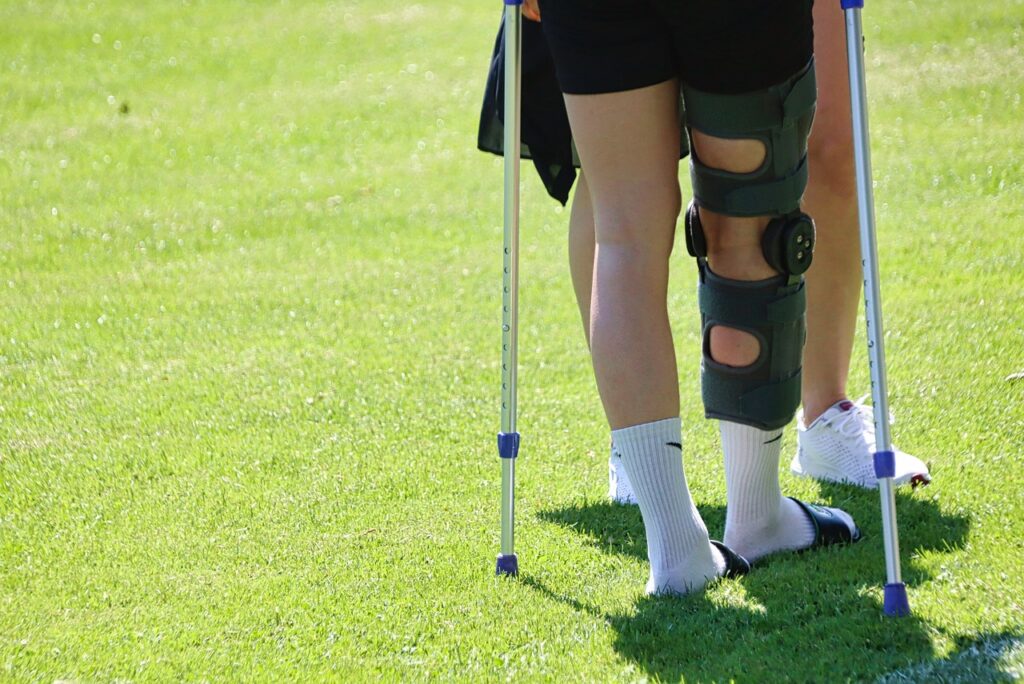Crutches are mobility aids that can support and assist individuals recovering from injuries or surgeries affecting their lower limbs. Proper usage of crutches is crucial to ensure safety, stability, and efficient movement during the recovery process. This article will provide a step-by-step guide on using crutches effectively, allowing you to regain mobility confidently.
1. Choosing the Right Crutches:
Before starting, choosing the appropriate crutches for your needs is essential. There are different types available, such as underarm crutches and forearm crutches. Underarm crutches are placed beneath your arms, while forearm crutches have cuffs that wrap around your forearms. Consult with your healthcare professional to determine the best option for you.
2. Proper Fit and Adjustment:
Once you have selected suitable crutches, ensuring a proper fit and adjustment is crucial to maximize comfort and stability. Follow these steps:
- Stand up straight with your shoes on and maintain a relaxed posture.
- Adjust the crutch height to approximately four finger-widths below your armpits.
- The handgrips should be at a comfortable level, allowing your elbows to bend at a slight angle (around 20-30 degrees).
- Ensure the crutch cuffs or underarm pads are secure and properly positioned.
3. Learning the Proper Technique:
Using crutches efficiently involves learning the correct technique to minimize strain and maximize stability. Here’s a step-by-step guide:
- Start by positioning the crutches slightly wider than shoulder-width apart.
- Keep your weight distributed evenly between the crutches and your unaffected leg.
- Move the crutches forward, supporting your weight as you step with your unaffected leg.
- Avoid placing weight on your injured or recovering leg. Your doctor will provide specific guidelines on how much weight you can safely apply to your injured leg.
- As you become more comfortable, progress by moving both crutches and the affected leg forward simultaneously.
- Take small, controlled steps while maintaining your balance and stability.
- Be cautious when going up or down stairs.
To simplify the process, remember the following sequence: crutches, affected leg, and unaffected leg.
This sequence can be summarized as follows:
1. Move the crutches forward.
2. Step with your affected leg in line with crutches.
3. Step with your unaffected leg, positioning it in front of the crutches.
By following this order, you establish secure three-point support, enhancing your stability and support while using crutches.
4. Building Strength and Endurance:
Using crutches may require additional effort and strength from your upper body. As you begin your recovery journey, it’s important to gradually build strength and endurance to improve your mobility and reduce discomfort. Regular exercises recommended by your healthcare professional, such as shoulder shrugs, bicep curls, and forearm stretches, can help strengthen the muscles involved in crutch use.
Navigating Stairs with Crutches: Simple Guidelines to Remember
When faced with the challenge of using crutches on stairs, it’s essential to approach the situation cautiously and take additional safety precautions.
To help you remember the correct technique for using crutches on stairs, there’s a helpful saying: “Whatever is good goes up, whatever is bad goes down,“ Follow these guidelines to ascend and descend stairs using your crutches safely:
Tips for Going Upstairs:
- Before attempting to climb the stairs, assess your ability and confidence. If you feel unsure or unstable, seeking assistance from another person is recommended.
- Position yourself close to the edge of the step, ensuring your crutches have a firm grip on the surface.
- Keep one crutch under each arm.
- Step up with your stronger leg.
- Push down on your crutches for support, then step up with your weaker leg.
- Once both feet are on the same step, bring your crutches up to that step.
- Pause, check your balance, and ensure stability before moving to the next step.
- Repeat steps 4 to 7 until you reach the top of the stairs.
Tips for Going Downstairs:
- Keep one crutch under each arm.
- Keep the crutches in the middle of the step, away from the edge.
- Place your crutches on the step below.
- Step down with your weaker leg first.
- Followed by stepping down with your stronger leg.
- Pause, check your balance, and ensure stability before moving to the next step.
- Repeat steps 3 to 6 until you reach the bottom of the stairs.
Remember, “up with the good, down with the bad” means leading with your stronger leg when going up and leading with your weaker leg when going down. Always prioritize your safety and take your time to ensure a stable and balanced movement on each step.
If you have any concerns or questions about using crutches on stairs, consult your healthcare professional for personalized advice and guidance tailored to your situation.

